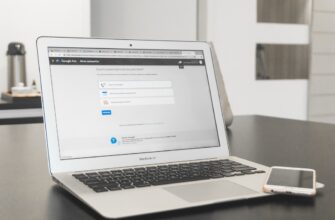🎮 Level Up with $RESOLV Airdrop!
💎 Grab your free $RESOLV tokens — no quests, just rewards!
🕹️ Register and claim within a month. It’s your bonus round!
🎯 No risk, just your shot at building crypto riches!
🎉 Early birds win the most — join the drop before it's game over!
🧩 Simple, fun, and potentially very profitable.
- 10 Best Practices to Recover Your Account from Hackers | Ultimate Guide
- Immediate Response: Critical First Steps
- Account Recovery Protocol: Step-by-Step
- Platform-Specific Recovery Tactics
- Email Accounts (Gmail, Outlook, Yahoo)
- Social Media (Facebook, Instagram, Twitter)
- Financial/Banking Accounts
- Post-Recovery Security Reinforcement
- Proactive Prevention Strategies
- Frequently Asked Questions (FAQ)
- How long does account recovery typically take?
- Should I pay ransom if hackers lock my account?
- Can I recover accounts without backup email/phone?
- How do I know if my device is infected after a hack?
- Are password managers safe to use?
10 Best Practices to Recover Your Account from Hackers | Ultimate Guide
Discovering your account has been hacked triggers instant panic. With over 24 billion compromised accounts circulating on the dark web according to Digital Shadows, knowing how to recover account from hackers is non-negotiable digital survival. This guide delivers actionable best practices to regain control, secure your data, and prevent future breaches—all based on cybersecurity expert protocols.
Immediate Response: Critical First Steps
Time is critical during a hack. Follow these steps within the first 30 minutes:
- Disconnect compromised devices from Wi-Fi and cellular data to halt further access
- Run antivirus scans on all devices to detect malware/keyloggers
- Contact your bank if financial accounts are involved to freeze transactions
- Document evidence (screenshots, unauthorized activity logs) for reporting
Account Recovery Protocol: Step-by-Step
Systematically regain control using this proven framework:
- Initiate password reset via “Forgot Password” using backup email/phone
- Revoke suspicious sessions in account settings > Security > Active sessions
- Enable two-factor authentication (2FA) immediately after regaining access
- Audit account activity for unrecognized logins or changes
- Update security questions with fictional answers hackers can’t research
Platform-Specific Recovery Tactics
Email Accounts (Gmail, Outlook, Yahoo)
- Use account recovery forms with details like previous passwords
- Contact support with government ID for identity verification
Social Media (Facebook, Instagram, Twitter)
- Report “My Account Is Compromised” via platform help centers
- Request login approval codes to trusted contacts
Financial/Banking Accounts
- Call fraud departments directly (never use email)
- Request new account numbers and cards if compromised
Post-Recovery Security Reinforcement
After regaining control, implement these safeguards:
- Password manager adoption (Bitwarden, 1Password) for unique 16+ character passwords
- Universal 2FA activation using authenticator apps, not SMS
- Monthly security audits checking connected apps/permissions
- Backup email setup separate from primary accounts
Proactive Prevention Strategies
Reduce future risks with these habits:
- Never reuse passwords across accounts
- Enable login alerts for all critical accounts
- Regularly update software/OS to patch vulnerabilities
- Use VPNs on public Wi-Fi networks
- Verify sender authenticity before clicking links/attachments
Frequently Asked Questions (FAQ)
How long does account recovery typically take?
Most platforms resolve cases within 24-72 hours with proper verification. Complex cases involving financial theft may take weeks.
Should I pay ransom if hackers lock my account?
Never pay. There’s no guarantee of account return, and it funds criminal activity. Report to IC3.gov instead.
Can I recover accounts without backup email/phone?
Yes. Provide account creation details (date, location, previous passwords) via official recovery forms. Physical ID verification may be required.
How do I know if my device is infected after a hack?
Run scans with Malwarebytes or Norton Power Eraser. Watch for unusual processes in Task Manager (Windows) or Activity Monitor (Mac).
Are password managers safe to use?
Reputable managers (LastPass, Dashlane) use zero-knowledge encryption. Your master password never leaves your device, making them safer than manual passwords.
Final Tip: Report all hacks to the FTC at IdentityTheft.gov to create an official recovery plan. Staying vigilant with these best practices transforms you from hacking victim to security champion.
🎮 Level Up with $RESOLV Airdrop!
💎 Grab your free $RESOLV tokens — no quests, just rewards!
🕹️ Register and claim within a month. It’s your bonus round!
🎯 No risk, just your shot at building crypto riches!
🎉 Early birds win the most — join the drop before it's game over!
🧩 Simple, fun, and potentially very profitable.








